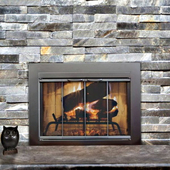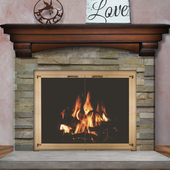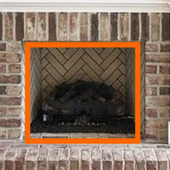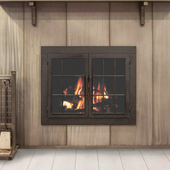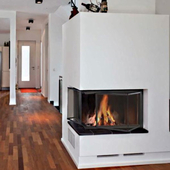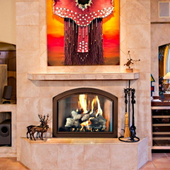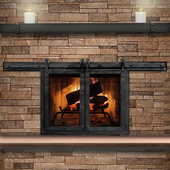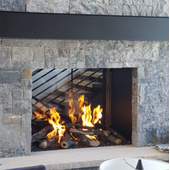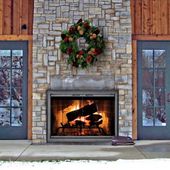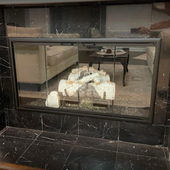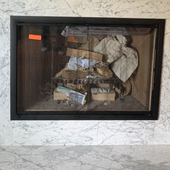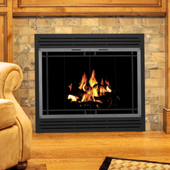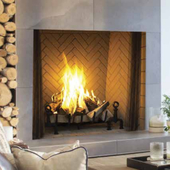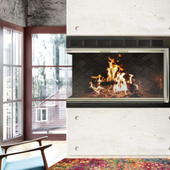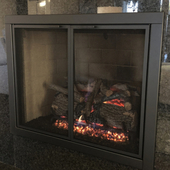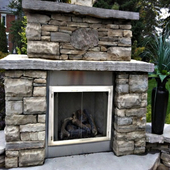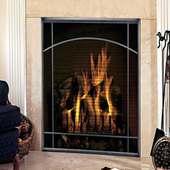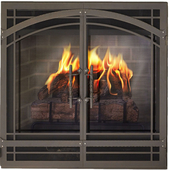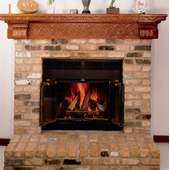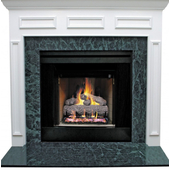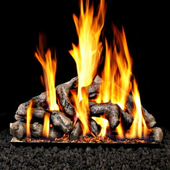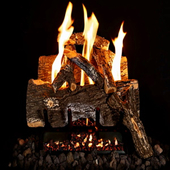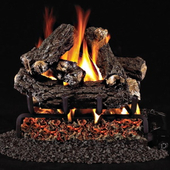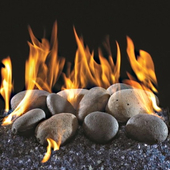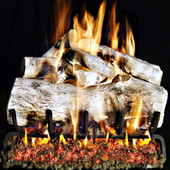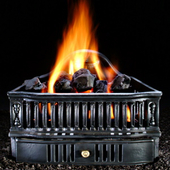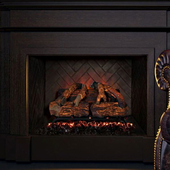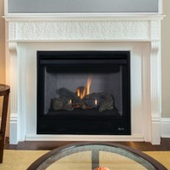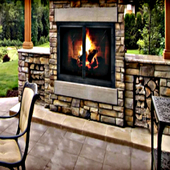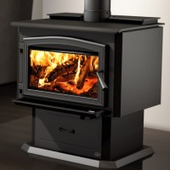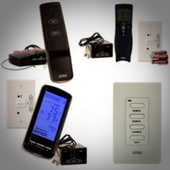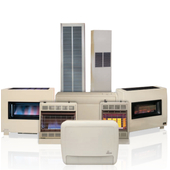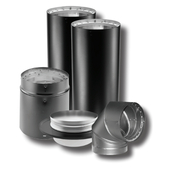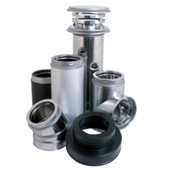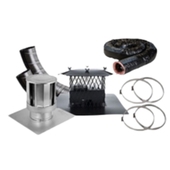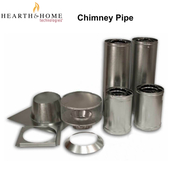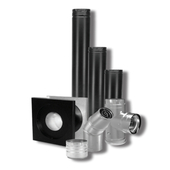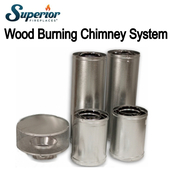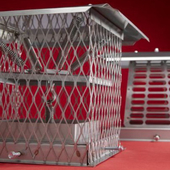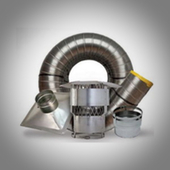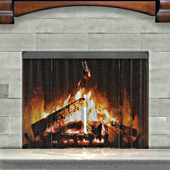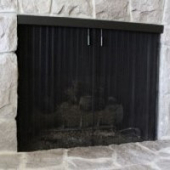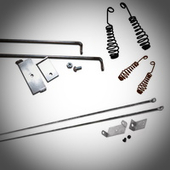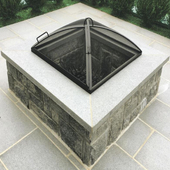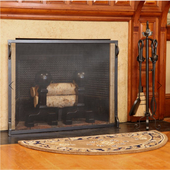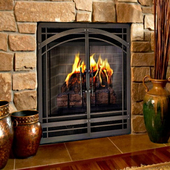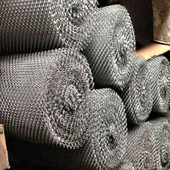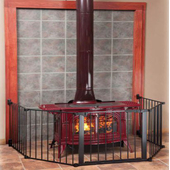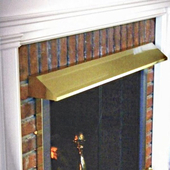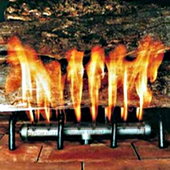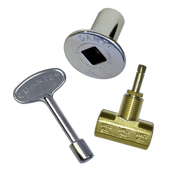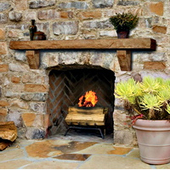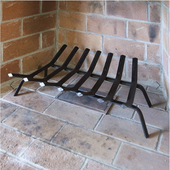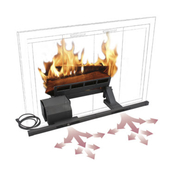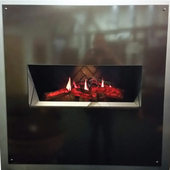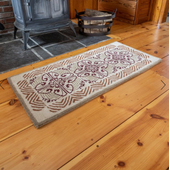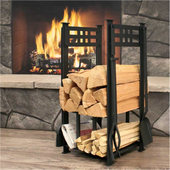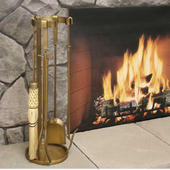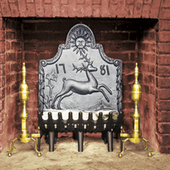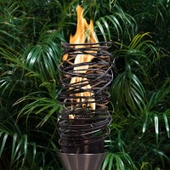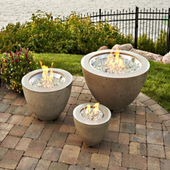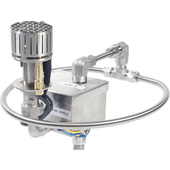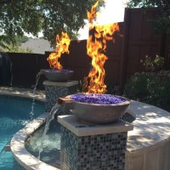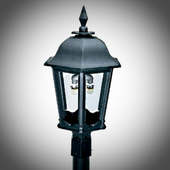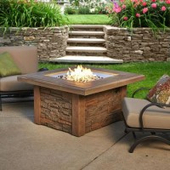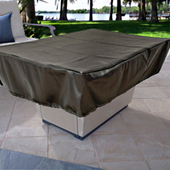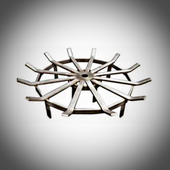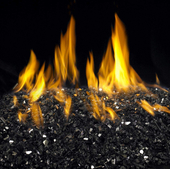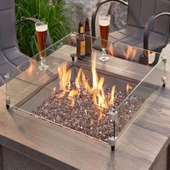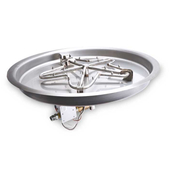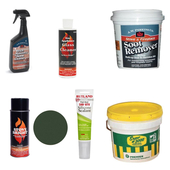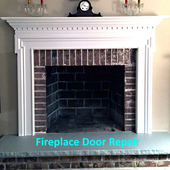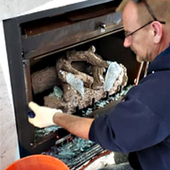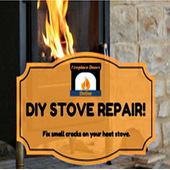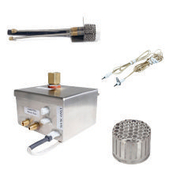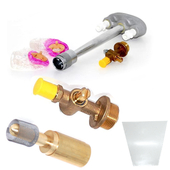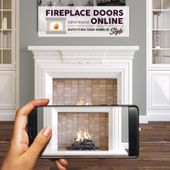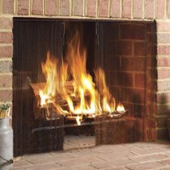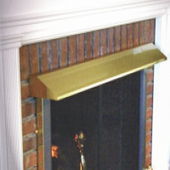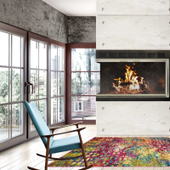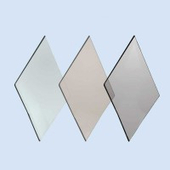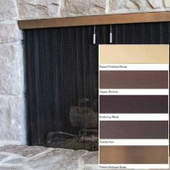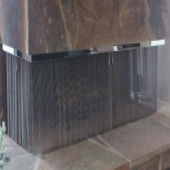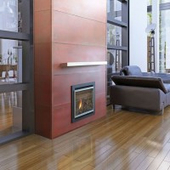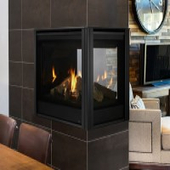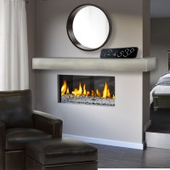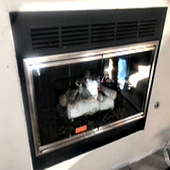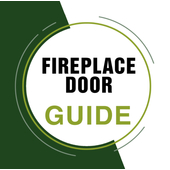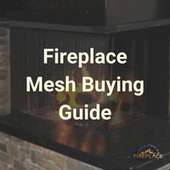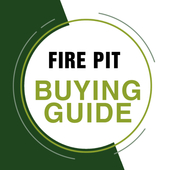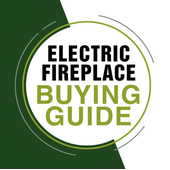Superior Secure FlexTM Flexible 5-Inch Firestop Spacer (SF4.5HF5)
Key Features:
A Firestop Spacer for a Flexible Vent System is a critical component designed to enhance the safety and efficiency of ventilation systems in residential, commercial, and industrial settings. This innovative product plays a pivotal role in preventing the spread of fire and smoke within a building while accommodating the flexibility required in modern HVAC (Heating, Ventilation, and Air Conditioning) systems.
Key features and benefits of a Firestop Spacer for Flexible Vent Systems include:
- Fire Resistance: The primary function of this spacer is to provide fire resistance, creating a barrier that prevents the passage of flames, hot gases, and smoke from one compartment of a building to another. This is crucial for protecting lives and property during a fire emergency.
- Flexibility: Unlike traditional rigid vent systems, modern HVAC systems often incorporate flexible ducts to navigate around obstacles and reach specific areas. Firestop Spacers are designed to accommodate this flexibility, ensuring that even flexible ducts maintain their fire-resistant properties.
- Ease of Installation: Firestop Spacers are typically easy to install and can be integrated into both new construction and retrofit projects. They are available in various sizes and configurations to suit different types of flexible vent systems.
- Compliance with Building Codes: These spacers are engineered to meet or exceed building code requirements and fire safety regulations. Ensuring compliance is crucial for passing inspections and maintaining a safe environment.
- Material Durability: Firestop Spacers are often constructed from fire-resistant materials like intumescent substances, metal, or other fire-rated materials. This ensures their long-term effectiveness in the event of a fire.
- Versatility: These spacers are versatile and can be used in a wide range of applications, including residential, commercial, and industrial settings. They are suitable for use in walls, floors, and ceilings.
- Maintenance and Inspection: Regular maintenance and inspection of Firestop Spacers are essential to ensure they remain in optimal condition. These components should be checked periodically to confirm their fire resistance and effectiveness.
- Enhanced Safety: By incorporating Firestop Spacers into a flexible vent system, building owners and occupants can enjoy increased peace of mind, knowing that their ventilation system is less likely to contribute to the spread of fire and smoke.
In summary, a Firestop Spacer for Flexible Vent Systems is a critical element for fire safety and compliance in modern buildings. It combines the flexibility required for modern HVAC systems with the essential fire resistance needed to protect lives and property in the event of a fire emergency. It's a valuable addition to any construction or renovation project that prioritizes safety and code compliance.
Specifications:
- Materials: Heavy-duty galvanized steel construction
- Diameters: Designed for 4.5-inch inner diameter and a 7.5-inch outer diameter venting systems
- Limited Lifetime Warranty
Key Advantages of Having a Flexible Vent System:
A flexible vent system, often used in various industrial and HVAC (heating, ventilation, and air conditioning) applications, offers several key advantages. These advantages make it a valuable choice for many situations where traditional rigid vent systems may not be as effective or practical. Here are some of the key advantages of having a flexible vent system:
- Versatility: Flexible vent systems are highly adaptable and can be used in a wide range of applications. They can bend and flex to fit into tight or irregular spaces, making them suitable for installations where rigid ductwork is impractical.
- Easy Installation: Installing flexible vent systems is often easier and quicker than rigid systems. They can be cut to the desired length on-site, reducing the need for custom fabrication and complex installation procedures.
- Reduced Labor Costs: The ease of installation translates into reduced labor costs, as less time and effort are required to set up the vent system. This can be particularly beneficial for contractors and building owners looking to save on installation expenses.
- Enhanced Airflow: Flexible vent systems are designed to minimize airflow resistance, which can help improve the efficiency of HVAC systems. Reduced resistance means better airflow and potentially lower energy consumption.
- Noise Reduction: Flexible vents can absorb sound and vibrations, leading to quieter operation of HVAC systems. This is especially important in commercial and residential settings where noise control is a concern.
- Resistance to Stress and Movement: These systems are built to withstand vibrations, temperature fluctuations, and movement without compromising their structural integrity. This makes them suitable for applications in environments where rigid ducts might crack or break.
- Space Savings: Flexible vents can be routed through smaller openings and tight spaces, allowing for more efficient use of available space in buildings. This is especially valuable in retrofitting or renovation projects.
- Customization: Flexible vent systems can be easily customized to suit specific requirements. They are available in various diameters, lengths, and materials to meet the needs of different applications.
- Maintenance and Repairs: When maintenance or repairs are needed, flexible vents are typically easier to access and work on than rigid ductwork. This can reduce downtime and service costs.
- Resistance to Corrosion: Flexible vent materials are often designed to resist corrosion, which can extend the lifespan of the system and reduce the need for frequent replacements.
- Cost-Effective: Overall, flexible vent systems can be a cost-effective solution due to their lower installation and maintenance costs, as well as their potential to improve energy efficiency.
It's important to note that while flexible vent systems offer numerous advantages, they may not be suitable for all applications. The choice between flexible and rigid ductwork should be based on factors such as the specific requirements of the project, budget constraints, and local building codes and regulations.
Choosing The Perfect Venting System for Your Fireplace
To ensure security, effectiveness, and usefulness, it is crucial to select the ideal venting system for your fireplace. There are several factors to consider when selecting a venting system, including the type of fireplace, fuel source, local building codes, and your personal preferences. Here's a step-by-step guide to help you make the right choice:
Determine the Type of Fireplace:
- Wood-Burning Fireplace: If you have a traditional wood-burning fireplace, you'll need a chimney or venting system designed to handle the combustion byproducts and smoke.
- Gas Fireplace: Gas fireplaces can be vented through either a direct vent or a ventless (vent-free) system. Your choice will depend on local regulations and your heating needs.
Understand Venting Options:
- Chimney: A traditional masonry or metal chimney is suitable for wood-burning fireplaces. Ensure it is in good condition and meets local codes.
- Direct Vent: This system is commonly used for gas fireplaces. It has a sealed combustion chamber and draws fresh air from outside for combustion while expelling exhaust gases outside through a dedicated vent pipe.
- Ventless (Vent-Free): Ventless gas fireplaces don't require a chimney or external venting. They burn gas cleanly and release heat and moisture into the room. However, they are subject to strict regulations in some areas due to air quality concerns.
Check Local Building Codes:
- Before making a decision, check local building codes and regulations. Some areas have strict requirements for venting systems to ensure safety and air quality. Compliance with these codes is crucial.
Consider Efficiency:
- Choose a venting system that maximizes energy efficiency. Direct vent systems are more efficient than traditional chimneys because they minimize heat loss.
Safety Considerations:
- Safety should be a top priority. Ensure that the venting system is correctly installed and maintained to prevent carbon monoxide leaks and other hazards.
Aesthetics and Design:
- The venting system should complement your home's design and aesthetics. It should be as unobtrusive as possible while still performing its function.
Professional Installation:
- It's strongly recommended to have your venting system installed by a qualified professional who is familiar with local codes and regulations.
Maintenance:
- Regular maintenance is essential to keep your venting system working efficiently and safely. Schedule annual inspections and cleanings, especially for wood-burning chimneys.
Budget:
- Consider your budget for both the initial installation and ongoing maintenance. While ventless systems may be cheaper to install initially, they may have higher operating costs due to increased gas consumption.
Environmental Impact:
- If you're concerned about environmental impact, consider the emissions associated with your chosen venting system. Wood-burning fireplaces, for example, can release particulate matter and other pollutants into the air.
Ultimately, your individual circumstances, such as the sort of fireplace you have, your local laws, and your own preferences for aesthetics and efficiency, will determine the ideal venting system for your fireplace. You can make a more informed choice by speaking with our experts at fireplace doors online.
A Comprehensive Guide to Buying a Fireplace Venting System
A fireplace venting system is an essential part of your fireplace that makes sure that smoke and combustion byproducts are securely removed from your home while providing a supply of fresh air for burning. Whether you're installing a new fireplace or upgrading an existing one, this comprehensive buyer's guide will help you understand the various venting options and make an informed decision.
1. Types of Fireplace Venting Systems:
There are three main types of fireplace venting systems:
- Chimney Venting: Traditional masonry fireplaces typically have a brick or stone chimney. They rely on natural convection to draw air in and expel smoke out through the chimney. This type of venting is suitable for wood-burning fireplaces.
- Direct Venting: This is a sealed system that draws combustion air from the outside and expels exhaust gases through a vent pipe. Direct vent fireplaces are highly efficient and can be used with various fuel types, including gas and propane.
- Ventless or Vent-Free Venting: These fireplaces do not require a venting system, as they are designed to burn fuel cleanly enough that the combustion byproducts can be safely released into the room. They are typically gas-powered and can be installed almost anywhere.
2. Choosing the Right Type:
- Consider Your Fuel Type: Determine whether you want a wood-burning, gas, or electric fireplace. Your fuel choice will influence the type of venting system you need.
- Efficiency and Convenience: Direct vent and ventless fireplaces are typically more energy-efficient and easier to install than traditional chimneys. Consider your preferences for convenience and energy efficiency.
3. Sizing and Location:
- Calculate Heating Needs: Determine the heating capacity you need based on the size of the room or area you want to heat. This will help you choose an appropriately sized fireplace and venting system.
- Location: Decide where you want to install your fireplace. The location may impact the type of venting system you can use and the venting route.
4. Venting Materials:
- Chimney Materials: If you're using a traditional chimney, consider the type of materials you want for its construction, such as brick, stone, or metal flue liners.
- Vent Pipe Material: For direct vent fireplaces, the vent pipe is typically made of aluminum or stainless steel. Ensure the materials are suitable for your fuel type and meet local building codes.
5. Installation and Safety:
- Professional Installation: Proper installation is crucial for safety and performance. Hire a certified technician or contractor experienced in fireplace venting systems.
- Clearances: Ensure proper clearances to combustibles are maintained as per the manufacturer's guidelines and local building codes.
6. Venting Accessories:
- Termination Caps: These protect the vent opening from weather and pests.
- Chimney Liners: If you have a masonry chimney, consider installing a stainless steel liner to improve efficiency and safety.
7. Maintenance and Cleaning:
- Regular Inspections: Schedule regular inspections and cleaning to ensure your venting system is functioning correctly and free from debris or blockages.
8. Legal and Safety Considerations:
- Local Codes and Regulations: Check with your local authorities to ensure compliance with building codes and regulations regarding fireplace venting.
- Carbon Monoxide Detectors: Install carbon monoxide detectors in your home, especially if you have a gas fireplace.
9. Budget Considerations:
- Initial Cost: Consider both the upfront cost of the fireplace and venting system, as well as the ongoing operating costs (fuel, maintenance, etc.).
10. Aesthetics:
- Design and Style: Choose a venting system that complements your home's aesthetic and blends well with your interior design.
Remember that safety should always be your top priority when selecting and installing a fireplace venting system. Consult with professionals and follow manufacturer guidelines and local regulations to ensure a safe and efficient installation.
No posts found


